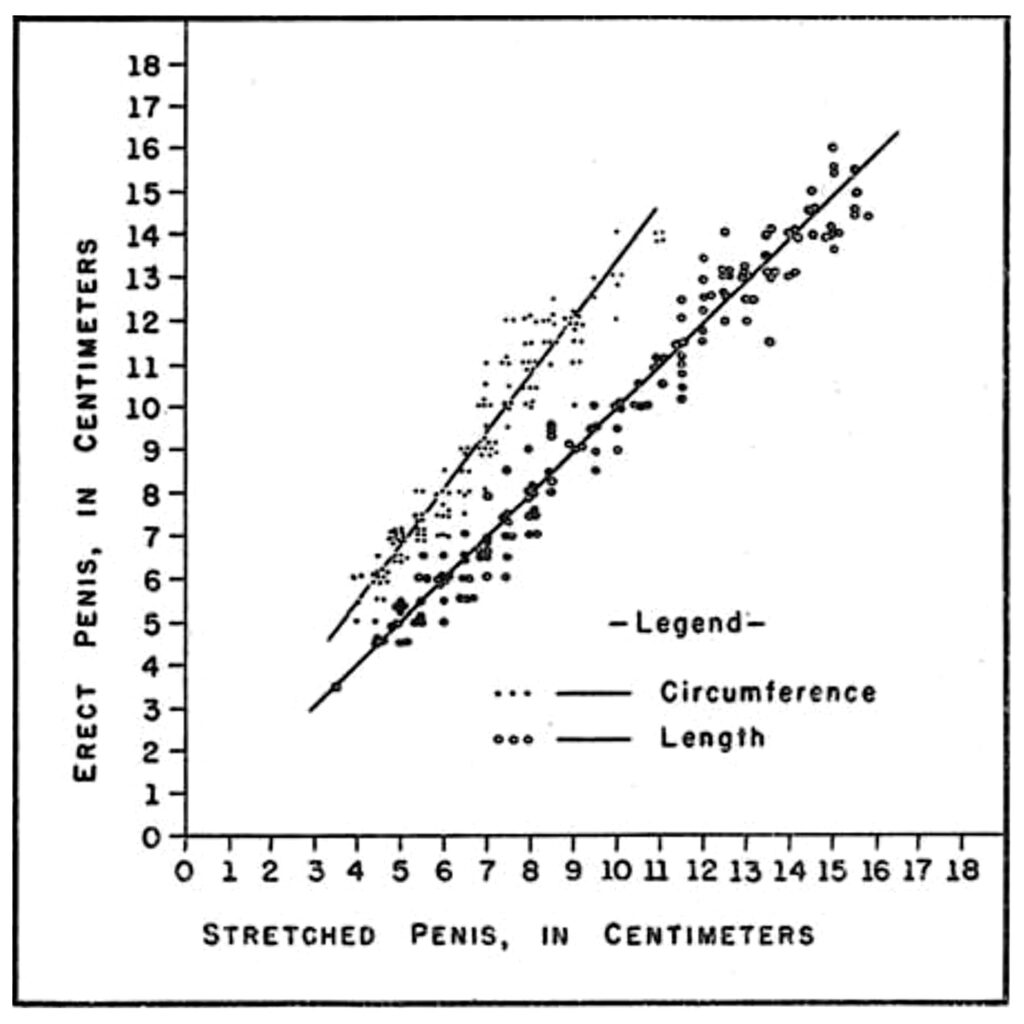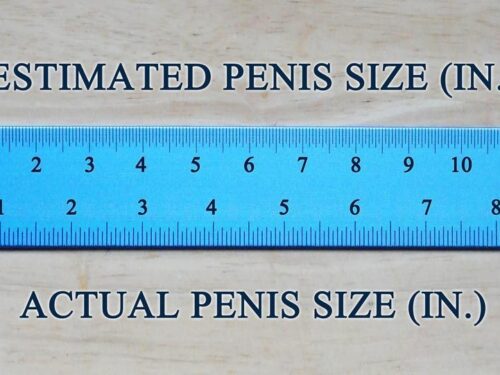
There are dozens of reputable penis size studies out there, but you wouldn't be alone if you assumed they're measuring a bunch of hard dicks. After all, that's what they're purporting to tell us: the average length and distribution of erect penises. But very often they've not measured any erect penises at all — instead they've taken the subject's soft penis, stretched it out, and measured that. What gives?
Stretched flaccid length is measured by just what the name implies: stretching the subject's soft penis under moderate but consistent tension, and then measuring from the base to the tip.
While there had been a handful of penis size reports before it, the first significant modern study to examine penis size was conducted by William Schonfeld and Gilbert Beebe in 1942 in New York City. They examined the genitals of 1,480 male subjects, raging in age from infants to 25 years old (125 were 18 or older) to determine growth patterns of the penis and testicles. That's a lot of penises to measure, and the bulk of those subjects would not physiologically capable of attaining an erection as needed for examination.
So Schonfeld and Beebe developed the stretched flaccid measurement, which they validated by having 150 of their subjects mark the length of their "morning wood" erections onto provided un-marked strips of cardboard every morning. The researchers averaged those marks as that subject's typical erect length, and then compared that measurement to the stretched flaccid lengths they obtained in a clinical setting. The result as an almost exact 1-to-1 match: if you measure a stretched flaccid penis at X length, then it will statistically be within 1.5% of that length when erect.

This system was validated again in 2014 by the Chen, Yan, and Dai study out of China, which found incredibly similar results between stretched flaccid length and erect length for both the average and standard deviation distribution. These results tell us that if you're measuring penis size for a scientific study, stretched flaccid is an excellent proxy for the erect length.
Both studies saw individual variations between the two measurements. Few men were right on the line with an erect length that exactly equalled their stretched length. Almost all had one longer than the other, but when averages were drawn roughly half of men had a stretched length that was longer than their erections, and the other half had stretched lengths shorter than their averages. But when you throw them all into a pool of data, the averages between erect and stretched flaccid length were effectively equal.
But that still leaves open the question: why not measure erect lengths instead? In short, that's a hard task (please pardon the pun). Erections have to be stimulated, either manually (which takes time) or through injection (which is expensive and still takes time). And even then, there's no guarantee that the erection achieved is of maximum strength and quality — a clinical setting is rarely the most arousing one.
Stretched flaccid length simply is faster, cheaper, and reliable enough to get useful results.
So how does this apply to you? As noted above, stretched flaccid length is most useful as an aggregate number; some penises stretch further than their erect length, while others under the same tension don't stretch as far as they do when erect. It's an excellent proxy for erect length, but it is not especially useful on an individual basis. If you're able to stretch further when soft than you achieve when you are fully erect that is not a sign that you're not "meeting your potential" or anything like that, just as men that are longer erect than they stretch aren't somehow exceeding the standard. Every person's body is different, and the elasticity of the tissues in your penis play a role in this.
You can measure your stretched flaccid length if you're curious, but don't read anything into any differences between that number and your erect length. It's a tool for bulk data gathering, and has no useful application on the individual level.











